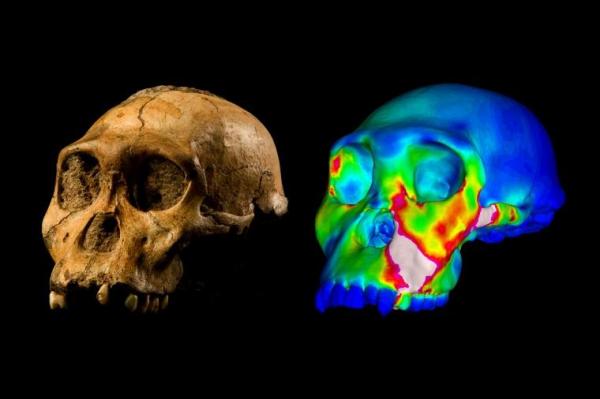
ST. LOUIS, Feb. 8 (UPI) — In 2012, a team of scientists published a paper suggesting Australopithecus sediba, an early human ancestor, subsisted on mostly on hard foods including tree bark, nuts, fruits and leaves.
But even if early hominids had the stomach for such a diet, they didn’t have the jaw. A new study published in the journal Nature Communications suggests biting on hard foods like bark or shelled nuts would have risked dislocating the jaw of A. sediba.
Scientists at Washington University in St. Louis say the hominid didn’t have the nutcracker jaw that its predecessors possessed. The new evidence supports the assertion that A. sediba was a transitional species between A. africanus and either Homo habilis or the later H. erectus.
“Most australopiths had amazing adaptations in their jaws, teeth and faces that allowed them to process foods that were difficult to chew or crack open,” lead researcher David Strait, a professor of anthropology at WUSTL, said in a news release.
“Among other things, they were able to efficiently bite down on foods with very high forces.”
“A. sediba had an important limitation on its ability to bite powerfully,” added Justin Ledogar, a former graduate student of Strait and now a researcher at the University of New England in Australia.
“If it had bitten as hard as possible on its molar teeth using the full force of its chewing muscles, it would have dislocated its jaw.”
To test the sturdiness of the hominid’s jaw, researchers subjected a skull found in 2008 in South Africa to a series of biomechanical tests and modeling simulations similar to those used to measure the strength of car and airplane components.
Previous assumptions about the eating habits of A. sediba are based on evidence of teeth damage. While the early hominid may have eaten some hard foods, the new research suggests it wasn’t adapted to do so, and likely relied more heavily on foods that were easier to chew.
“Humans also have this limitation on biting forcefully and we suspect that early Homo had it as well, yet the other australopiths that we have examined are not nearly as limited in this regard,” Ledogar said.
“This means that whereas some australopith populations were evolving adaptations to maximize their ability to bite powerfully, others — including A. sediba — were evolving in the opposite direction.”





